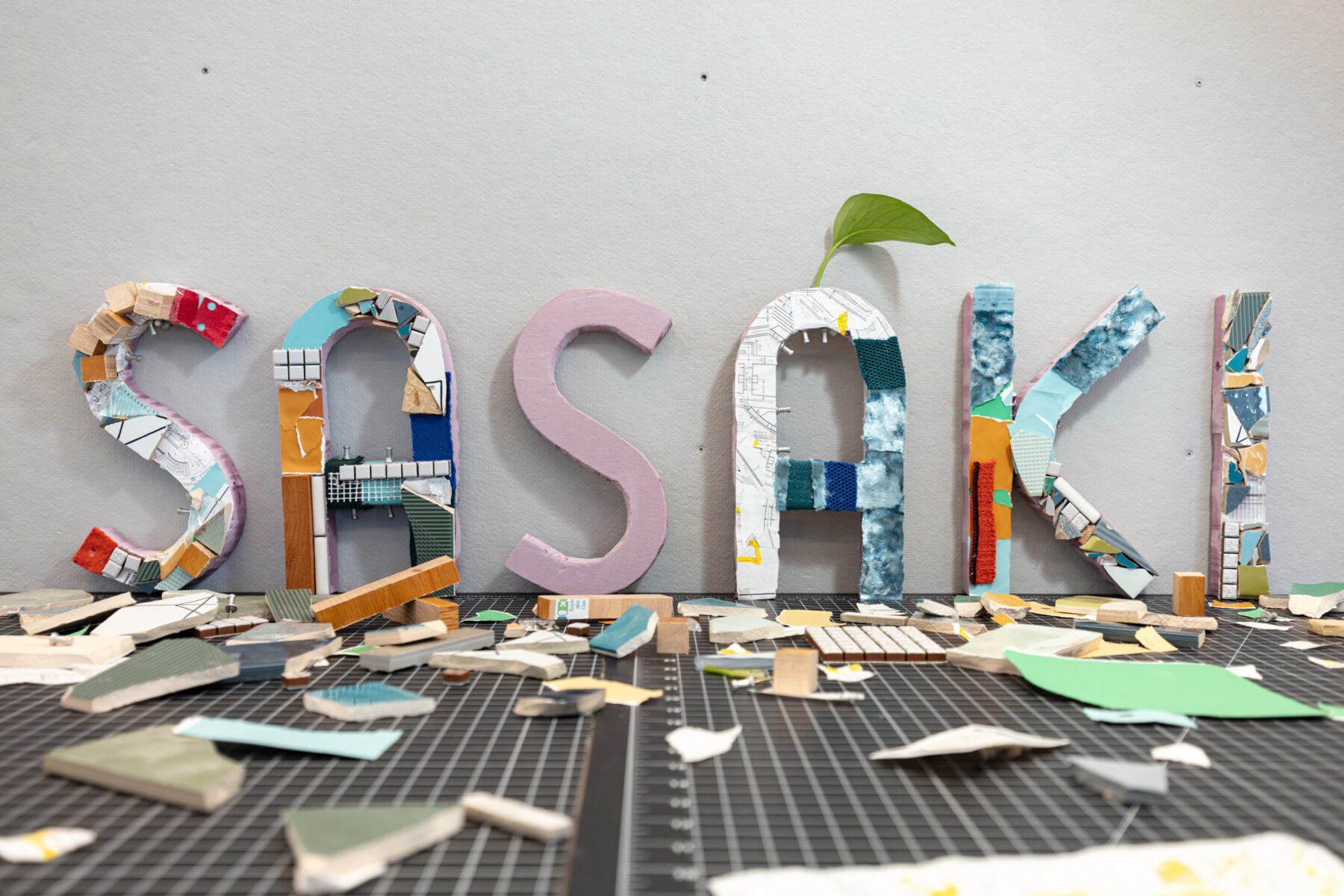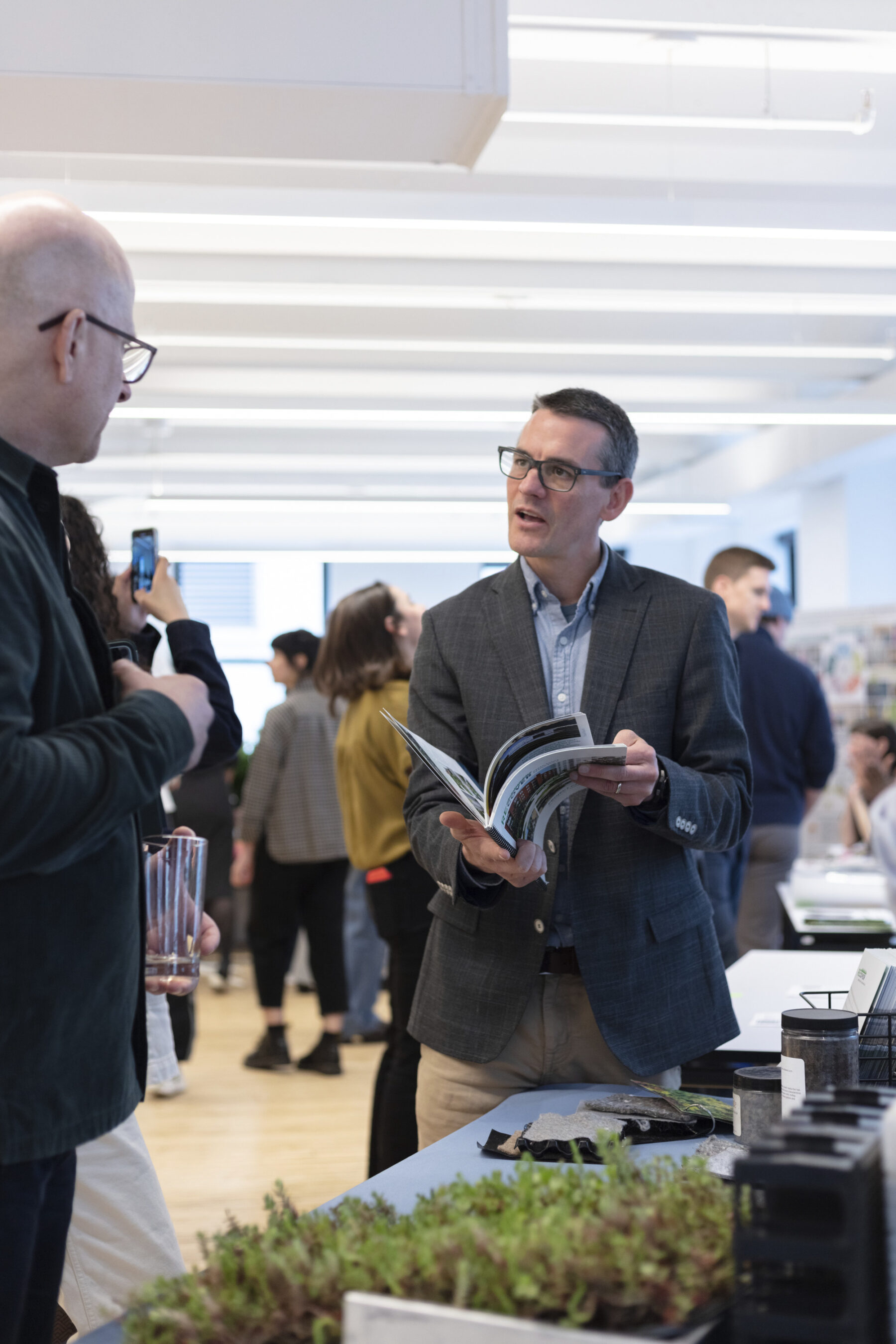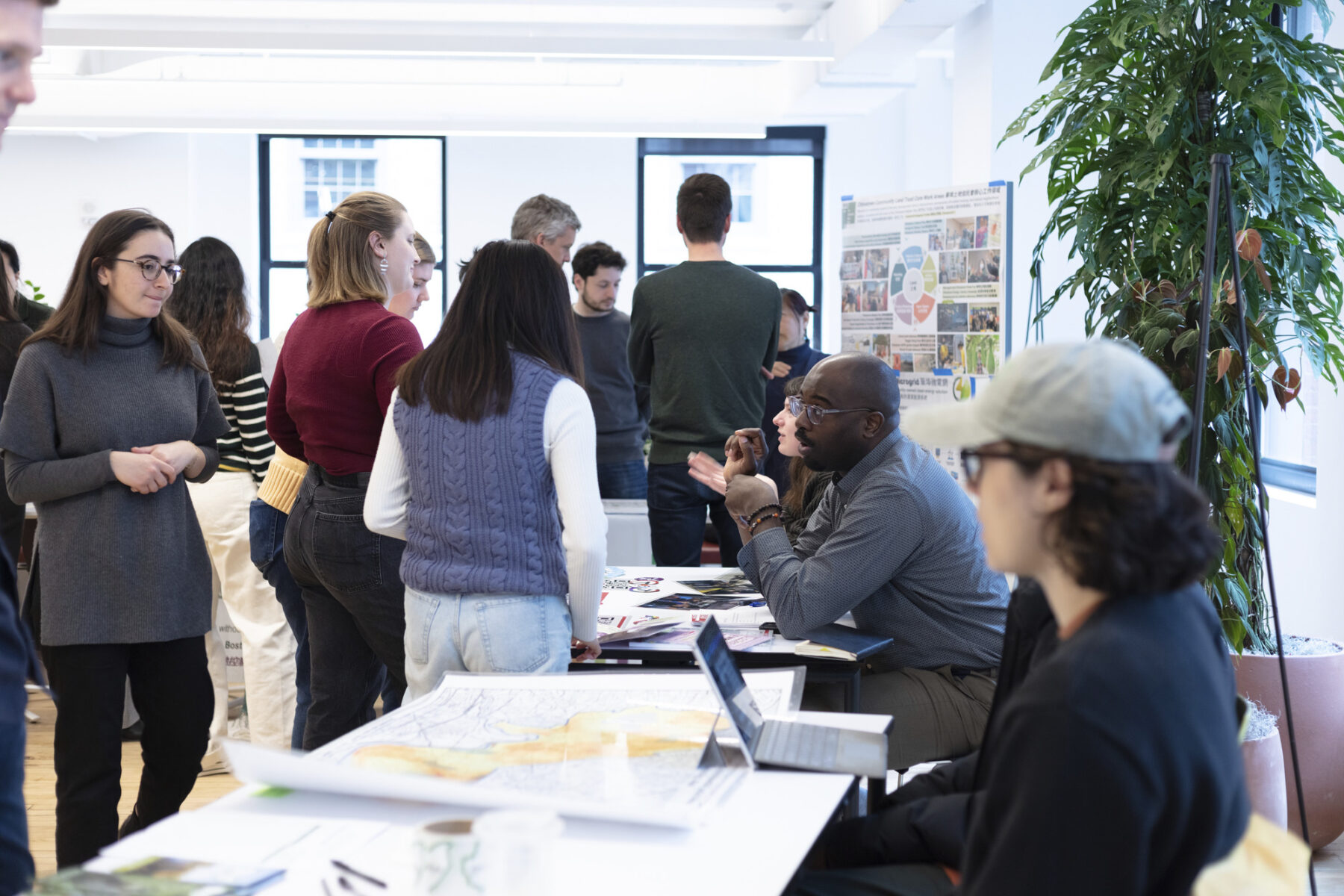Introducing the Carbon Conscience App
A new tool allows planners and designers to reduce embodied carbon from the early stages of planning
 Sasaki
Sasaki

We believe Earth Month is an opportunity to learn from one another, celebrate our achievements, and continue to strategize for a more resilient future.
This year, Sasaki marked Earth Month by putting on an internal Green Day event as one of our cultural high holidays. Our cultural high holiday program invites staff to organize events to help colleagues learn about and celebrate our firm’s diverse values.
“Green Day is an opportunity to learn, connect, and dream together,” said Sasaki director of sustainability and resilience, Tamar Warburg. “For environmental and fiscal stewardship, we have a responsibility to envision a resilient and equitable future for our clients and our communities.”
For this year’s Green Day event, Sasakians organized a full day of diverse, sustainability-oriented programming. The day kicked off with a keynote address by City of Boston’s Chief of Environment, Energy, and Open Space, Reverend Mariama White-Hammond. Chief White-Hammond oversees policy and programs on energy, climate change, sustainability, historic preservation, and open space.
During her keynote, Chief White-Hammond discussed some of the sustainability initiatives underway at the City of Boston, how to create an inclusive environment justice movement, and ways to come together to effectively enact change.
“We need to be really clear about our objectives not just on the green side but also for racial and economic justice,” Chief White-Hammond said. “And before we get started, let’s create a vision of what success looks like that is based in our history.”
She emphasized how crucial it is to learn about the history of the movements, and especially encouraged young activists to “tell the stories of our past.”

City of Boston’s Chief of Environment, Energy, and Open Space, Reverend Mariama White-Hammond gave a keynote address
Chief White-Hammond also talked about creating inclusionary practices in justice work so people don’t feel shut out.
“Invite people in,” she told Sasakians. “How are we thinking differently about creating on-ramps to environmental justice work? Some people who are directly impacted by climate change don’t even know they have expertise to share.”
She commended Sasaki’s engagement methods for the City of Boston’s Heat Plan, a citywide framework to prepare Boston for hotter summers and more intense heat events. During the engagement process, Sasaki invited the public to create comics depicting how and where they experience extreme heat.

During community engagement for Boston’s Heat Plan, Sasaki invited community members to create custom avatars and write 3-panel comics depicting how and where they experience extreme heat.
“It’s accessible. It’s fun,” said Chief White-Hammond, then asked, “how are we bringing that joy and creativity that reminds us why we are fighting and what we are fighting for?”
“Climate change is overwhelming and sometimes downright depressing,” she said. “If we aren’t bringing our absolute best selves to the work, how will we move forward? Another world is possible.”
During lunch, Sasakians explored opportunities at Boston-area environmental organizations during a community networking event.



The visiting organizations had a wide variety of focuses, from urban farming to green building education, improving transit to strengthening community resilience in Chinatown, and more.
Sasakians also had the opportunity to learn from their peers about sustainability and resilience initiatives underway across the practice. Sasakians conducted workshops about tools for analyzing operational and embodied carbon, including Cove.tool, EPIC Assessment, CARE Tool, and Sasaki’s own Carbon Conscience tool, which helps designers assess carbon-related impacts from early very stages of design at multiple scales. Sasakians also learned about a tool developed by our in-house Strategies team that calculates the impact of sun and shadow on outdoor thermal comfort.
In addition to this suite of digital tools, Sasaki has also recently invested in a myriad of site assessment tools designers can use to measure things like sound, water quality, and microclimate. Groups learned about how to use these tools in the field and tested them out on Sasaki’s roof deck.

Sasaki recently invested in a suite of site assessment tools designers can use in the field

Using the Kestrel Environmental Meter to measure climate conditions on Sasaki’s roof deck
The design team behind Sasaki’s new office led groups from the basement up to the roof, highlighting sustainability features in the design.
Sasakians also learned about Sasaki’s Climate Action Plan from director of sustainability and resilience, Tamar Warburg, and discussed potential challenges and opportunities to reduce our own carbon footprint from office operations.
Sasaki closed out the day’s celebration with a Happy Hour Green Crit-Crawl. Folks from across the office gathered to share ideas on three pin-up projects across the disciplines.



Sasakians showing off their green for Green Day
A new tool allows planners and designers to reduce embodied carbon from the early stages of planning
Sasaki collaborated with the City of Boston to develop strategies that will help build a more just, equitable, and resilient Boston